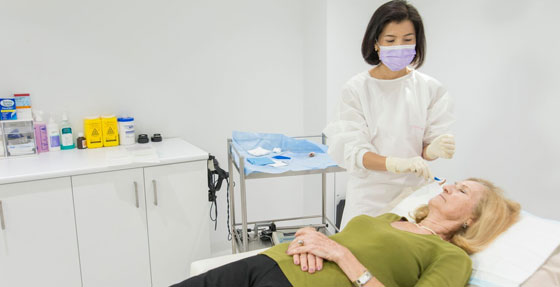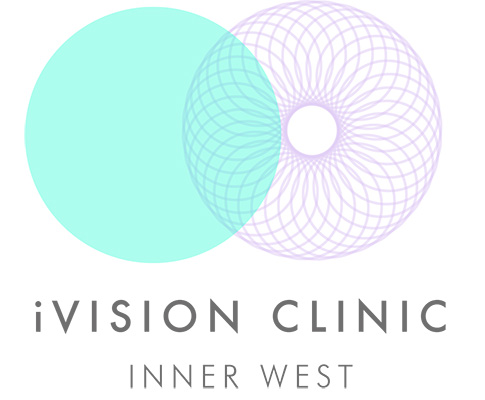Age Related Macular Degeneration
What is the Macula?
The macula is the centrally located light sensitive area of our retina. It is where our central vision comes from. We use it to recognise faces, read fine print, as well as distinguish colour.
What is Age Related Macular Degeneration (AMD or ARMD)?
ARMD is age related and causes the tissue and cells within the retina (particularly the macular) to break down. This can cause blurred vision, distortion and central visual loss.
ARMD is one of the leading causes of blindness in people over 50 in Australia. It is most commonly found in the Caucasian population. This condition is a chronic problem which there is no known cure, but there is treatment. Patients should be monitored or managed regularly by their Ophthalmologist. Advancement of this disease will not cause total blindness however there will be central visual loss.
Definitive risk factors for ARMD have not been determined however hereditary and smoking have a close correlation.

Types of ARMD
Dry Macular Degeneration – The dry form can produce gradual loss of vision. There is atrophy (wasting away) of the retinal tissue and yellowish metabolic wastes deposited (drusen) in the retina.
Wet Macular Degeneration – The wet form commonly known as active ARMD. Abnormal vessels (which are trying to provide oxygen to the atrophic retinal tissue) from underneath the retina break through causing bleeding and scarring into the retinal layers.
What are the symptoms of Macular Degeneration?
Macular degeneration early symptoms include:
- Straight lines appear distorted.
- Missing, or jumping letter/words when reading
- Dark, blurry, grey spots appear in the central vision.
- There are several eye conditions that have similar symptoms therefore it is sensible to see your Ophthalmologist to diagnose the condition.
How is Age Related Macular Degeneration diagnosed?
Your Ophthalmologist will perform the following tests:
Vision testing: Assessing central vision.
Amsler Grid: A card with a grid to assess distortion or blurred spots.
FFA (Fundus Fluorescein Angiography): Fluorescein dye is injected into the arm and photographs are taken of the retina to assess for active ARMD. This test takes about 15 minutes to do.
OCT Scans (Optical Coherence Topography): It is a non-invasive scan of the macula to identify retinal structural changes and fluid.
Comprehensive eye examination: dilation of the pupils will allow your Ophthalmologist to get a clear view of your macula and to make a diagnosis.
Treatment / Management
The progression of Dry ARMD can be altered through diet and lifestyle changes. Usually it is recommended to:
- Take vitamins instructed by your Ophthalmologist (Macutec and Lutein)
- Eat healthy nuts
- Eat low Glycaemic index (GI) carbohydrates
- Eat green leafy vegetables and fresh fruit daily (antioxidant rich foods)
- Eat fish meal 2-3 times a week
- Quit smoking
Wet ARMD can also only be slowed down through diet and lifestyle changes. However, it is an active condition which can be altered with one or a combination of the follow treatments below:
Laser
Laser is rarely used to treat wet ARMD. It will cause permanent scarring centrally and a blind spot. It can be used to seal vessels bleeding away from the macula.
Intravitreal Injections
Currently intravitreal injections are the primary form of treatment for this condition. Drugs such as Lucentis and Eylea are used to inject into the white part of the eye known as the Sclera, the patient will have plenty of anaesthetic during the procedure.
These are anti–VEGF (Vascular Endothelial Growth Factor) drugs. VEGF are proteins within the eye that trigger the growth of abnormal vessels and fluid accumulation within the retinal layers.
Initially 3 courses of injections are given, normally 4 weeks apart.
The primary aims of these drugs are to dry out the fluid in the retina and hold the vision to its current level. Patients have reported some visual improvement.
Lucentis (Ranibizumab): Is a TGA approved drug. It has been used for the past ten years and is one the most highly effective drug available.
Eylea (Aflibercept): Is a TGA approved drug. It has been used for the past two to three years and is one the most highly effective drug available.

What are the risks/side effects of Intravitreal injection?
A patient may experience some irritation and grittiness following the injection. The eye may water but symptoms usually settle down the next day. The antiseptic (betadine) used to prepare the eye for the procedure may be the cause of this sensation.
The ophthalmologist may prescribe their patients antibiotic eye drops or lubricants after the injection.
As with any minor surgery procedure there is a small risk of complication such as infection of the eye. Usually this can be treated with medicated drops and injections.
